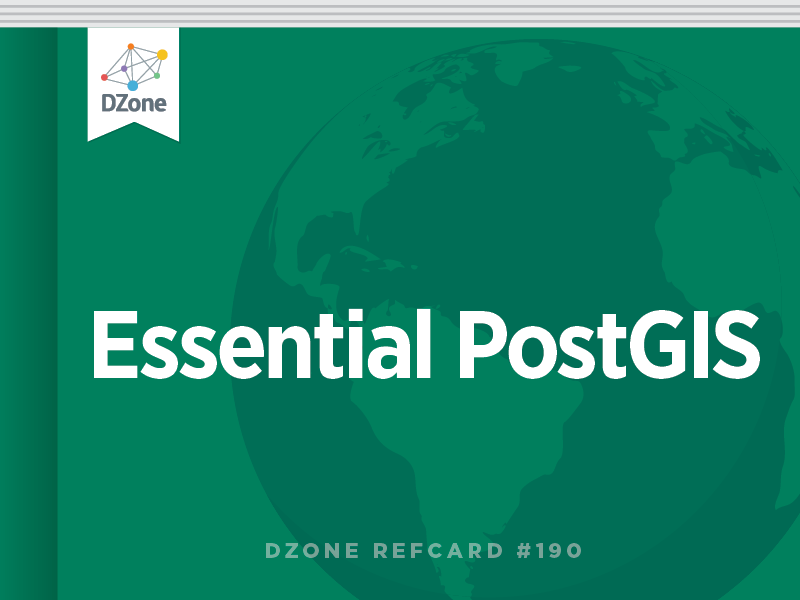About PostGIS
PostGIS is a free, open source spatial extender for the PostgreSQL open source database. Spatial extenders leverage existing database capabilities to handle geographical and image data. Common applications include proximity analysis for addressing questions of how far something is, geocoding for finding latitude and longitude of addresses, and web mapping for supplying data to various map servers.
PostGIS has features equal to, and often exceeding, popular commercial offerings such as Oracle Spatial and SQL Server. Like Oracle, it offers 2D and 3D support for geometry. PostGIS geography type mimics what you’ll find in SQL Server.
This Refcard provides a quick reference for common tasks you perform when using PostGIS. We based our examples on PostgreSQL 9.1+ and PostGIS 2.1. For a thorough treatment of PostGIS, we encourage you to buy PostGIS In Action, 2nd Edition and to chomp the PostGIS manuals at http://postgis.net/documentation.
This Refcard assumes that you are reasonably familiar with PostgreSQL and have more or less heard of basic concepts required to work with geographical and image data. No experience with PostGIS is assumed. For more on PostgreSQL, check out our Essential PostgreSQL Refcard (http:// refcardz.dzone.com/refcardz/essential-postgresql).

